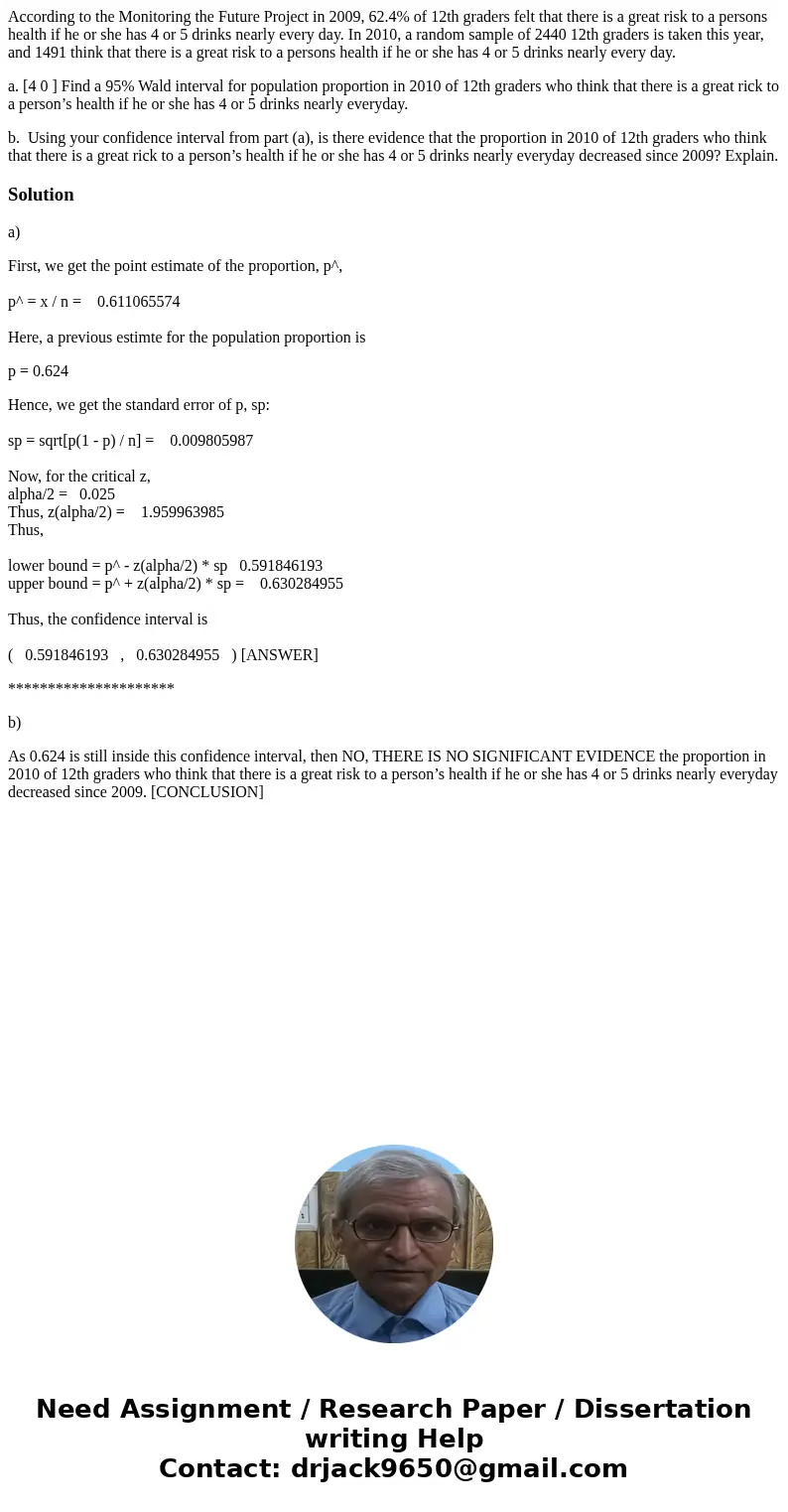According to the Monitoring the Future Project in 2009 624 o
According to the Monitoring the Future Project in 2009, 62.4% of 12th graders felt that there is a great risk to a persons health if he or she has 4 or 5 drinks nearly every day. In 2010, a random sample of 2440 12th graders is taken this year, and 1491 think that there is a great risk to a persons health if he or she has 4 or 5 drinks nearly every day.
a. [4 0 ] Find a 95% Wald interval for population proportion in 2010 of 12th graders who think that there is a great rick to a person’s health if he or she has 4 or 5 drinks nearly everyday.
b. Using your confidence interval from part (a), is there evidence that the proportion in 2010 of 12th graders who think that there is a great rick to a person’s health if he or she has 4 or 5 drinks nearly everyday decreased since 2009? Explain.
Solution
a)
First, we get the point estimate of the proportion, p^,
p^ = x / n = 0.611065574
Here, a previous estimte for the population proportion is
p = 0.624
Hence, we get the standard error of p, sp:
sp = sqrt[p(1 - p) / n] = 0.009805987
Now, for the critical z,
alpha/2 = 0.025
Thus, z(alpha/2) = 1.959963985
Thus,
lower bound = p^ - z(alpha/2) * sp 0.591846193
upper bound = p^ + z(alpha/2) * sp = 0.630284955
Thus, the confidence interval is
( 0.591846193 , 0.630284955 ) [ANSWER]
*********************
b)
As 0.624 is still inside this confidence interval, then NO, THERE IS NO SIGNIFICANT EVIDENCE the proportion in 2010 of 12th graders who think that there is a great risk to a person’s health if he or she has 4 or 5 drinks nearly everyday decreased since 2009. [CONCLUSION]

 Homework Sourse
Homework Sourse